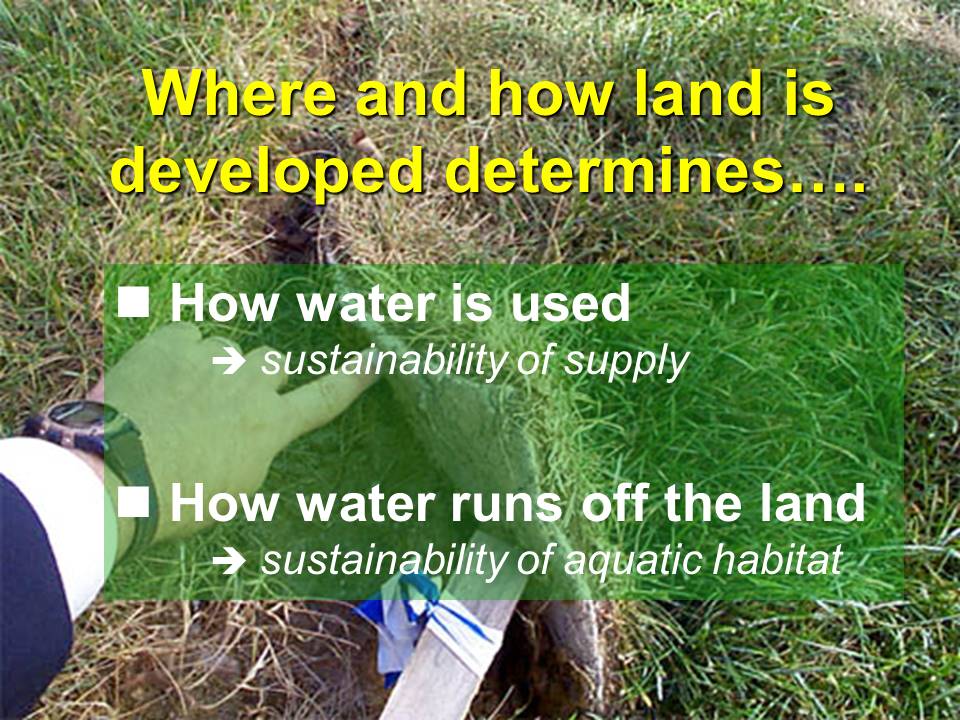LIVING WATER SMART IN BRITISH COLUMBIA: At the last in the 2008 Comox Valley Seminar Series, Kim Stephens explained the graphic that illustrates the connection between land development and the sustainability of water supply and aquatic habitat (November 2008)

Vancouver Island Learning Lunch Seminars
The Water Sustainability Action Plan for British Columbia comprises inter-connected program elements that give local governments and practitioners the tools and experience to better manage land and water resources.
One of these program elements is the 2008 Vancouver Island Learning Lunch Seminar Series. This program is adding depth to Living Water Smart, the provincial government’s vision and plan to keep British Columbia’s water healthy and secure for the future.
The graphic above provided series participants with a mind-map as to what water sustainability means in on-the-ground terms.
Defining Water Sustainability
 At the last in the Learning Lunch Seminar Series, Kim Stephens (Program Coordinator for the Water Sustainability Action Plan) told the story behind the “how land is developed” communication graphic.
At the last in the Learning Lunch Seminar Series, Kim Stephens (Program Coordinator for the Water Sustainability Action Plan) told the story behind the “how land is developed” communication graphic.
“I created the graphic several years ago for a meeting with the Board of the Okanagan-Similkameen Regional District about the water sustainability component of their Regional Growth Strategy,” stated Kim Stephens. “I knew that if I did not have their attention on the first slide, I would not have their attention on the second.”
Use of Understandable Language:
“So I translated water sustainability into language that they understood…and it resonated,” continued Kim Stephens. To hear the rest of the story, watch the 2-minute video clip posted on YouTube.
“Where and how land is developed determines the sustainability of water supply and the sustainability of aquatic habitat,” he stated. “Soil depth is at the heart of the integrated solution.”
Learning Outcomes:
To view the balance of the presentation by Kim Stephens, click on the image below. In this 10-minute YouTube video clip, Kim Stephens reviewed the learning outcomes for each of the three seminars in the Learning Lunch Seminar Series.”A design with nature approach and re-use of resources are key to climate change adaptation,” he stated in conclusion.
To Learn More:
The YouTube videos are supplemented by a PowerPoint presentation that can be viewed by clicking on Beyond the Guidebook: Create Liveable Communities & Protect Stream Health.


